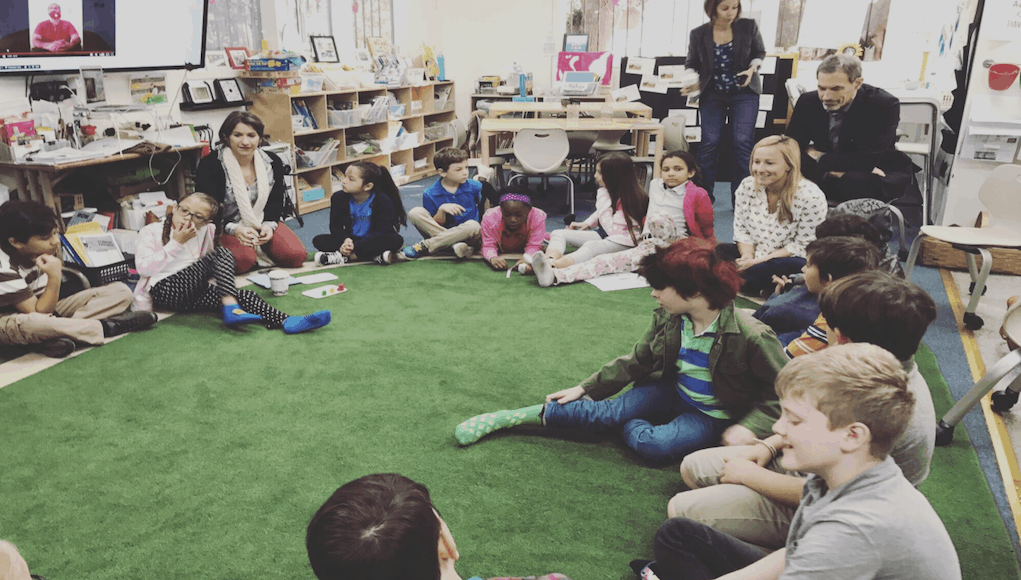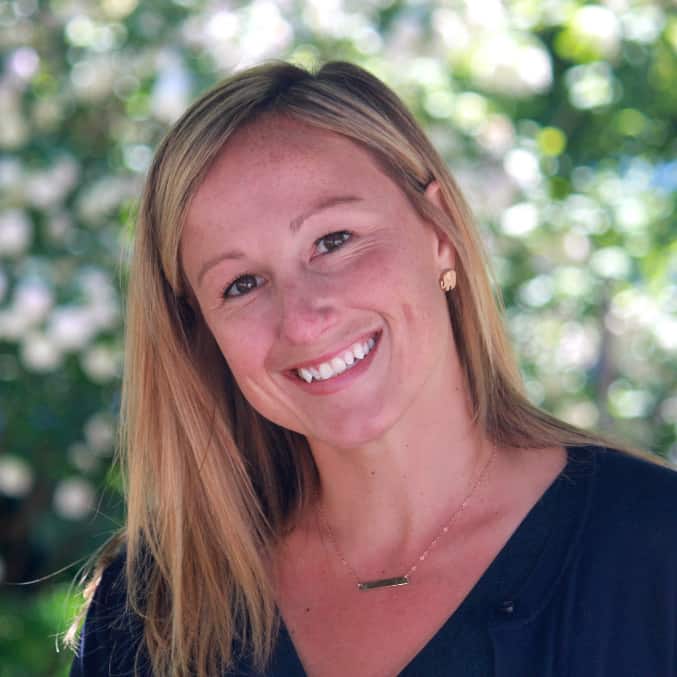8 Things to Look For in a Student-Centered Learning Environment

When you walk into a school, what do you look for? When envisioning what type of learning environment is ideal for your child or the students you work with, what are the most important characteristics? What are the most positive, memorable experiences from your own schooling?
I value many different learning models and environments and honestly do not feel it is my role to judge or evaluate what is “good.” That said, from years of teaching in the classroom and countless visits and interactions with excellent educators worldwide, I’ve created a list of things I commonly observe in great student-centered learning environments. As the Nellie Mae Education Foundation describes, student-centered learning “engages students in their own success—and incorporates their interests and skills into the learning process.” Student learning is personalized, competency-based, happens anytime and/or anywhere, and students have ownership in their learning.
I paired my personal list with thoughts from my teammates at Getting Smart to create a collection of “School Look Fors” based on our discussions and experiences in schools.
 Download a copy of this graphic
Download a copy of this graphic
Keep in mind, these Look Fors are not meant to evaluate a learning environment. Rather, they can serve as a springboard for creating talking and discussion points. Also, some of our favorite learning environments are places where educators are still working on addressing some of these Look Fors. It is obvious but still important to state this: every day is different in every school, and we don’t know the on-going experiences and interactions of those teaching and learning in those spaces.
Amongst the fourteen School Look Fors above, there are eight in particular that really stand out when it comes to student-centered learning environments.
1) High degree of student engagement; challenge, enthusiasm, joy. One of the goals of creating a student-centered environment should be to make learning joyful, challenging and engaging. Thrive Public Schools is one of the most joyful places we have visited. Joyful learning coupled with purposeful challenge makes Thrive truly an incredible place. The laughter and engagement flows through every hall and classroom.
 2) Students know what they are learning and why. Katherine Smith students, including the fourth-grade student (pictured in Quality Work + Project-Based Learning at Katherine Smith Elementary) who shared her writing project goals with us, know what they need to do to accomplish a project or a task. The project was personalized to her goals and she was working at her own pace to accomplish them. Educators from Katherine Smith share that this doesn’t happen overnight, but with great PBL facilitation even kindergartners can have this level of focus and clarity.
2) Students know what they are learning and why. Katherine Smith students, including the fourth-grade student (pictured in Quality Work + Project-Based Learning at Katherine Smith Elementary) who shared her writing project goals with us, know what they need to do to accomplish a project or a task. The project was personalized to her goals and she was working at her own pace to accomplish them. Educators from Katherine Smith share that this doesn’t happen overnight, but with great PBL facilitation even kindergartners can have this level of focus and clarity.
3) Blend of individual, collaborative team and large group work. Intrinsic Schools in Chicago is literally designed, both in structure and in instruction, to be a blend of individual and team work. Students all work in big learning pods and rotate between groups or one-on-one instruction with their teachers.
4) Students use personalized technology to produce as well as consume. Student-centered learning demands students spend at least some portion of their day working on personalized learning tasks or projects. CICS Irving Park students in Chicago use the Summit platform during part of their school day, and staff now find that discipline issues are lower and engagement is skyrocketing. CICS Irving Park partners with LEAP Innovations in their personalized learning pursuit, working together to ensure the learning is not just individualized but that it is also meaningful and connected to the real-world.
5) Students have some opportunity to work at their own pace and explore their own interests. Exploring student interests (and interests that they may not even realize they have) is core to a great student-centered environment. Students also work on addressing competencies, or skills, and do so at their own pace. Da Vinci students ebb and flow in and out of group work and individual projects, which are usually designed based off of student interests. Many students at Da Vinci are working towards mastering competencies and earning SNHU credits for doing so. They get to choose focus areas for their learning, which may include learning about communities and causes that they are most passionate about. Students are often working on a similar set of goals, but not all on the same activity or task.

6) Students are doing the bulk of the work and the talking. Students ideas and voices are front and center in student-centered learning environments. Design39 students are confident communicators and collaborators. Learning Experience Designers (also known as teachers) get students started and guide their learning, but allow for lots of student discussion and work time. On our visit last spring, students were working on their own or in groups throughout the school. One group of third graders we chatted with were addressing this question: “How might we define ourselves within this world we live in?”
7) There are multiple forms of assessment, feedback and demonstrations of learning. Students in student-centered learning environments get lots of feedback. They get individual feedback, hopefully on both academic and social and emotional goals. They also get group or team feedback, maybe based on projects or a team activity. At Cougar New Tech in the El Paso Independent School District, students keep their projects up in an in-school museum. Whenever visitors come, they get to practice their presentations and receive feedback to improve their work.
8) Instruction, culture and environment reflect and include student and staff diversity. From the Secretary to the Vice Principal, Chavez Multicultural Academic Center staff truly reflect the community and students served. The halls and walls are covered with student artwork, cultural displays and messages of empowerment around diversity as being a strength. Students see themselves in their learning space and their cultural strengths are highlighted throughout their learning day and in the physical school environment.
 What else would you add? Above all else, there is no better sign than being in a school environment where educators, parents and students express they are joyful about their school and confident in the quality of teaching and learning.
What else would you add? Above all else, there is no better sign than being in a school environment where educators, parents and students express they are joyful about their school and confident in the quality of teaching and learning.
For more, see:
- Getting Smart Podcast | Acton Academy: Building a Student-Centered School…And Global Network
- Reengineering HigherEd: Student-Centered Learning at Olin College
- 18 Tips for Making Blended Learning More Student-Centered
Stay in-the-know with all things EdTech and innovations in learning by signing up to receive the weekly Smart Update. This post includes mentions of a Getting Smart partner. For a full list of partners, affiliate organizations and all other disclosures, please see our Partner page.





Kendra
This is an excellent list of "look fors". Thank you. I would also add look for the inclusion of UDL design principles. UDL with its goal of creating - purposeful and motivated, resourceful and knowledgeable and strategic and goal-directed - expert learners, aligns well with intent of student centred environments, and student driven learning. Along those lines I would specifically look for how schools address learner variability, designing for it from the outset. One caveat I would make to the last point - Instruction, culture and environment reflect and include student and staff diversity. While I agree with the sentiment, the image quoted is exclusory. It states: "Respect for faith of others stands on the same footing as culture." If we are to be truly inclusive, then we need to include those learners and their families (often 25%) that are not faith based, providing antithesis, agnostics and those who are non religious, the same recognition and respect. What would a student, who is a humanist or secularist, feel like upon viewing those words?
Replies
Allesa Patton
How long where you in the classroom?
Scott
I like the list of look fors!.The graphic is great.
I want my learners to be engaged early anything that gets that attention I will use.
My learning environment is all adult, technical in nature,hands on.
I look for students(employees) to lead discussions when possible.
Good article
Replies
Erik Day
Thanks Scott, glad you enjoyed it!
hgf
Definitely imagine that that you stated. Your favourite reason appeared to be at the
internet the simplest thing to take into accout of. I say to
you, I definitely get annoyed while folks consider worries that they plainly don't realize about.
You managed to hit the nail upon the highest as smartly as defined out the whole
thing without having side effect , other people can take a signal.
Will likely be back to get more. Thank you
Daniel Hill
I would love to build a new web based and self paced curriculum from more than one source but:
1. I just don't have the time.
2. I don't know of the state of CA will approve.
3. The real deciding factor is the assessment, if we can crack that nut, then we will really takeoff.